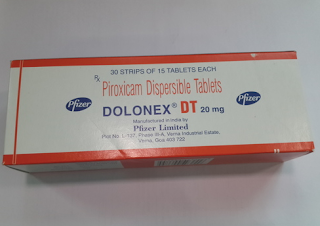Muscular dystrophy
Muscular dystrophy
Overview
Muscular dystrophy is a group of diseases that cause progressive weakness and loss of muscle mass. In muscular dystrophy, abnormal genes (mutations) interfere with the production of proteins needed to form healthy muscle.There are many different kinds of muscular dystrophy. Symptoms of the most common variety begin in childhood, primarily in boys. Other types don't surface until adulthood.
Some people who have muscular dystrophy will eventually lose the ability to walk. Some may have trouble breathing or swallowing.
There is no cure for muscular dystrophy. But medications and therapy can help manage symptoms and slow the course of the disease.
Symptoms
The main sign of muscular dystrophy is progressive muscle weakness. Specific signs and symptoms begin at different ages and in different muscle groups, depending on the type of muscular dystrophy.Duchenne muscular dystrophy
About half of people with muscular dystrophy have this variety. Although girls can be carriers and mildly affected, the disease typically affects boys.About one-third of boys with Duchenne muscular dystrophy don't have a family history of the disease, possibly because the gene involved may be subject to sudden abnormal change (spontaneous mutation).
Signs and symptoms typically appear between the ages of 2 and 3, and may include:
- Frequent falls
- Difficulty getting up from a lying or sitting position
- Trouble running and jumping
- Waddling gait
- Walking on the toes
- Large calf muscles
- Muscle pain and stiffness
- Learning disabilities
Becker muscular dystrophy
Signs and symptoms are similar to those of Duchenne muscular dystrophy, but typically are milder and progress more slowly. Symptoms generally begin in the teens but may not occur until the mid-20s or even later.Other types of muscular dystrophy
Some types of muscular dystrophy are defined by a specific feature or by where in the body symptoms first begin. Examples include:- Myotonic. Also known as Steinert's disease, this form is characterized by an inability to relax muscles at will following contractions. Myotonic muscular dystrophy is the most common form of adult-onset muscular dystrophy. Facial and neck muscles are usually the first to be affected.
- Facioscapulohumeral (FSHD). Muscle weakness typically begins in the face and shoulders. The shoulder blades might stick out like wings when a person with FSHD raises his or her arms. Onset usually occurs in the teenage years but may begin in childhood or as late as age 40.
- Congenital. This type affects boys and girls and is apparent at birth or before age 2. Some forms progress slowly and cause only mild disability, while others progress rapidly and cause severe impairment.
- Limb-girdle. Hip and shoulder muscles are usually the first affected. People with this type of muscular dystrophy may have difficulty lifting the front part of the foot and so may trip frequently. Onset usually begins in childhood or the teenage years.
When to see a doctor
Seek medical advice if you notice signs of muscle weakness — such as increased clumsiness and falling — in yourself or your childCauses
Certain genes are involved in making proteins that protect muscle fibers from damage. Muscular dystrophy occurs when one of these genes is defective.Each form of muscular dystrophy is caused by a genetic mutation particular to that type of the disease. Many of these mutations are inherited. But some occur spontaneously in the mother's egg or the developing embryo and can be passed on to the next generation.
Risk factors
Muscular dystrophy occurs in both sexes and in all ages and races. However, the most common variety, Duchenne, usually occurs in young boys. People with a family history of muscular dystrophy are at higher risk of developing the disease or passing it on to their children.Complications
- The complications of progressive muscle weakness include:
- Inability to walk. Some people with muscular dystrophy eventually need to use a wheelchair.
- Shortening of muscles or tendons around joints (contractures). Contractures can further limit mobility.
- Breathing problems. Progressive weakness can affect the muscles associated with breathing. People with muscular dystrophy may eventually need to use a breathing assistance device (ventilator), initially at night but possibly also in the day.
- Curved spine (scoliosis). Weakened muscles may be unable to hold the spine straight.
- Heart problems. Muscular dystrophy can reduce the efficiency of the heart muscle.
- Swallowing problems. If the muscles involved with swallowing are affected, nutritional problems and aspiration pneumonia may develop. Feeding tubes may be an option.




I was active in sports and frequent cycles. Few years ago, I started to have knee pain and my doctor advised me to go for knee cap replacement. but I didn't search online for herbal cure, then I came to know about Dr Itua herbal center online and started to take his herbal medicines daily. To my surprise , my pain was relieved within weeks and the doctor told me I didn't have to go for the surgery.
ReplyDeleteI'm glad to let everyone here on health conditions contact Dr Itua herbal center on drituaherbalcenter@gmail.com www.drituaherbalcenter.com. for any types of herbal medicines such as Herpes Cure,Hiv Cure,Parkinson Cure,Diabetes Cure,Lupus Cure, HPV Cure, MS Cure,ALS Cure, Cancer Cure,Pregnancy Herbal Medicines.
Dr Itua has all such herbal cure for all diseases and it's all permanent cure.